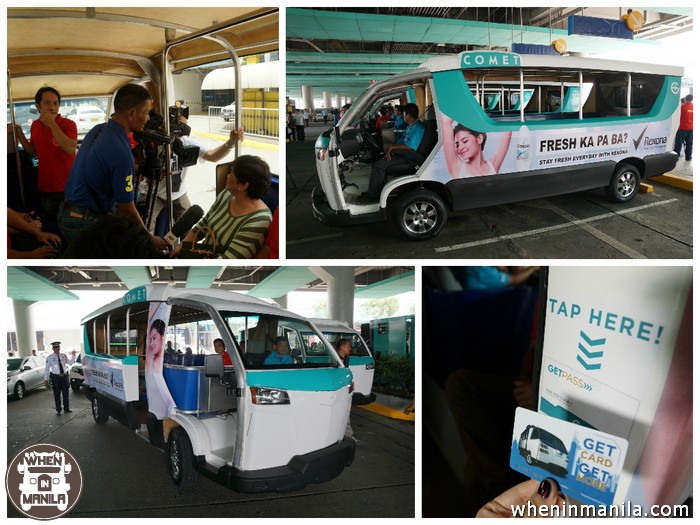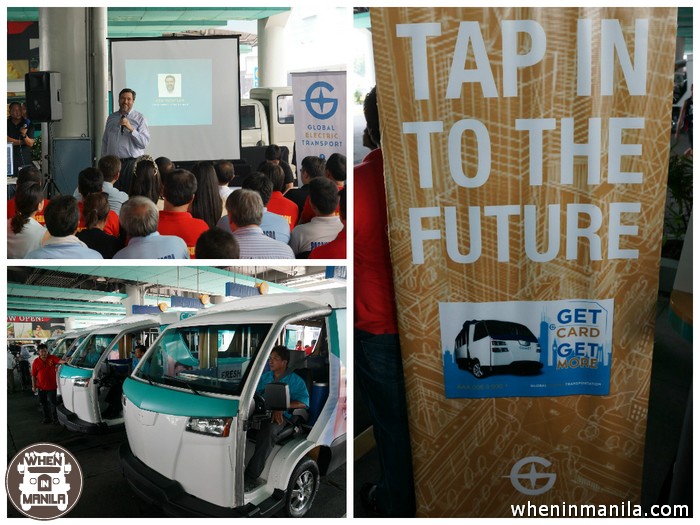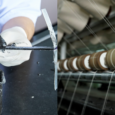The First COMET Electric Jeepneys Officially Hit The Road In Quezon City. Is This the Start of a Public Transport Revolution?
Last month, WhenInManila was one of the first publications in the country to be given access to the COMET factory in Carmona and I got to witness first-hand how mass production of the electric Jeepney of the future was getting underway. One month later, and the first batch of COMETs (standing for City Optimized Managed Electric Transport) is officially hitting the roads of Quezon City. Is this the start of a once in a lifetime public transport revolution for the Philippines?

The official launch of the first COMET route through Quezon City by Global Electric Transport (GET) took place at the SM North EDSA Terminal on Saturday (September 27) and gauging by the media presence on the day, the interest in this endeavor is immense – as is the potential impact this electric vehicle can have on the travelling public and the country as a whole.
GET and its partner company Pangea Motors, a US based manufacturer of low and medium speed electric vehicles, designed the COMET as a cleaner and better alternative for the old style Jeepneys, and the fully electric vehicle is powered by a lithium-ion battery that gives it a range of 80 kilometers and a top speed of 60kph.

Unlike in a traditional Jeepney, however, passengers of the COMET no longer need to hand their fare over to the driver in cash. Instead, it uses the TITO (Tap-In, Tap-Out) system, a cashless fare system that uses the GET Pass to ensure accurate and secure fare collection, and which is very similar in nature to London’s Oyster card or the Octopus card in Hong Kong. The GET Pass is available at the terminal or from GET Pass agents at the various COMET stops.
The reloadable GET Pass will cost you an initial 20 pesos to buy, plus any amount you wish to load onto the card for your fares, but GET Pass holders can avail of unlimited free COMET rides until October 9 as an introductory offer. After this date, normal Jeepney fares will apply and you pay by simply tapping the card against the reader when you enter the vehicle, and tapping it again when you alight. The GET Pass can also be registered in your name to protect the balance in case the card gets lost or stolen.

For its initial route, you can catch the COMET at the SM North EDSA Terminal across The Block, and unlike old Jeepneys, the COMET will only stop at dedicated stops, which along the south bound part of this route are: Road 3, Congressional Avenue corner Mindanao Avenue, Northbridge Plaza, Congressional Avenue corner Visayas, Congressional Avenue corner Tandang Sora Avenue, UP Professors Subdivision, Tierra Pura, Talipapa, Capitol Hills Drive, Magsaysay Avenue / U.P. GT-Toyota Gate, Quirino Avenue / U.P. Narra Gate, J.Escaler Street / Elizabeth Hall Building, Loyola Heights Brgy. Hall / Regis Building, Ateneo Gate 2 Overpass and the final stop at LRT Katipunan / Katipunan Terminal.
In the north bound direction, the journey starts at LRT Katipunan / Katipunan Terminal and then goes via stops at Ateneo Gate 2 Overpass, Miriam College, UP Town Center, Balara Jeepney Station / LWUA, MWSS (Maynilad Water), Capitol Hills Drive, Talipapa, Mira Nilla Subdivision, Tierra Verde, Congressional Avenue corner Visayas, Circle C/Cherry Fooderama, Puregold Mindanao Avenue / BJMP and Road 16, before arriving back at SM North EDSA Terminal. In case that’s all a bit much to remember, there are free maps showing all the stops available from the terminal.
The COMET is light-years ahead of other electric Jeepneys that have been tried on the streets of Manila before and the company’s target for it is an ambitious one: to replace 35,000 public utility Jeepneys with the COMET within five to seven years. That’s a huge number, and the impact of such a change would be nothing short of amazing. Air pollution would noticeably decrease, traffic issues on the routes would be eased, and noise levels would also be lowered, creating a healthier, safer and more sustainable public transport environment for everyone involved.
GET is partnering with Jeepney associations in order to reach that target, and the country’s leading transport group, Pasang Masda under their national president Obet Martin, has already forged an agreement with GET to purchase 10,000 COMETs to replace existing PUJs in the next three years. This then is not just a trial or a pilot scheme. This is the beginning of something really big and game changing.

There was a noticeable buzz and genuine excitement in the air on the day of the launch, with everyone in attendance realizing what a momentous occasion this could turn out to be. The start of a new chapter in Philippine public transport. A chapter that sees pollution-free COMETs, driven by well trained and properly paid drivers, and monitored in real time by a control center via GPS and on-board CCTV, ferry commuters back and forth across the city. This isn’t just some far fetched vision of the future. This is happening now, and you can be part of the electric revolution, which for now is starting in Quezon City but will soon be coming to a street near you. It’s time to say: Goodbye Jeepney, Hello COMET!
Global Electric Transport
https://www.facebook.com/GETPhilippines
The First COMET Electric Jeepneys Officially Hit The Road In Quezon City. Is This the Start of a Public Transport Revolution?




